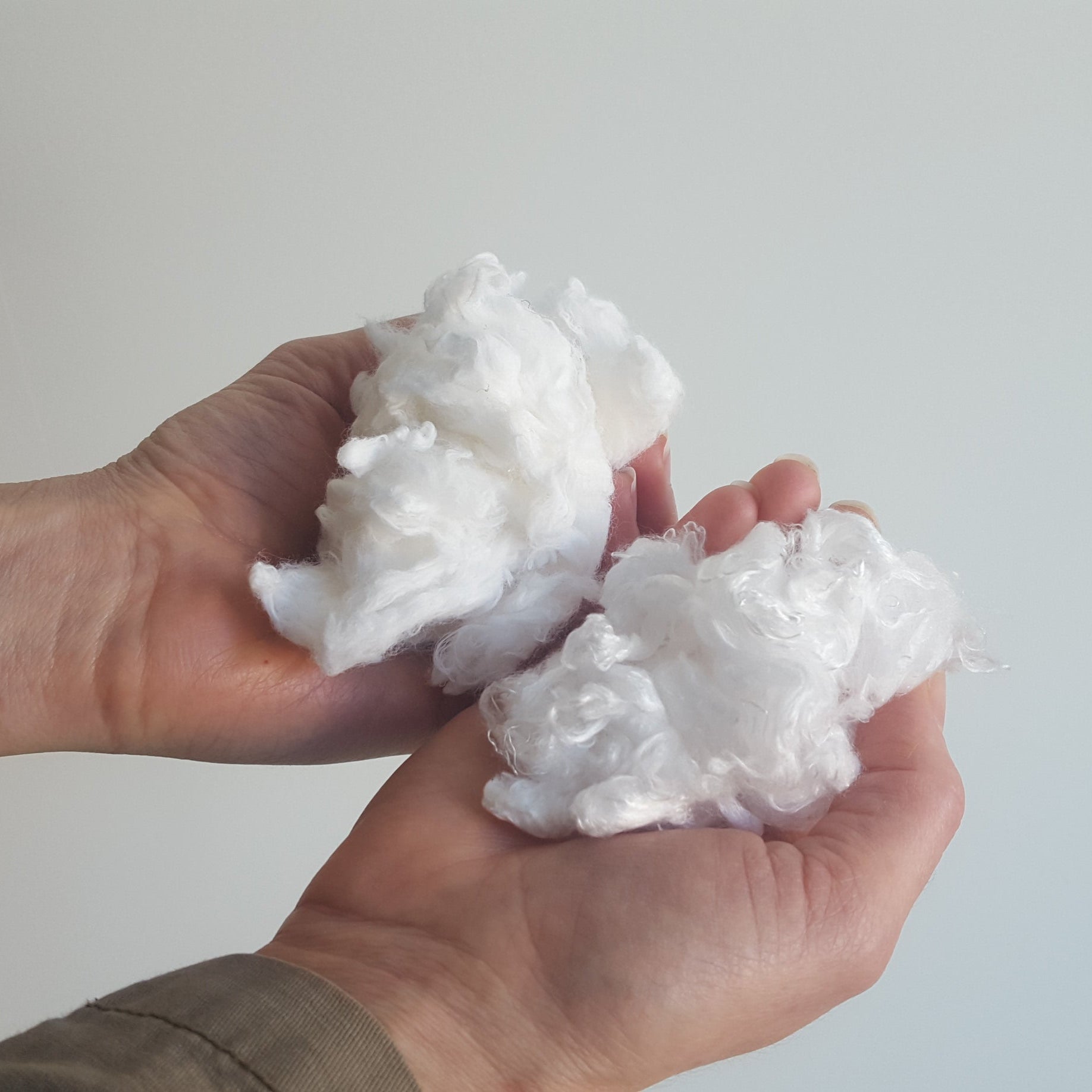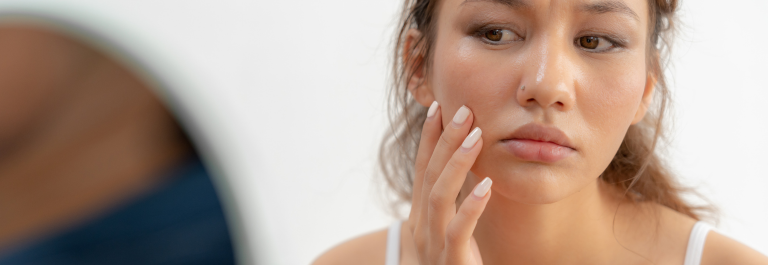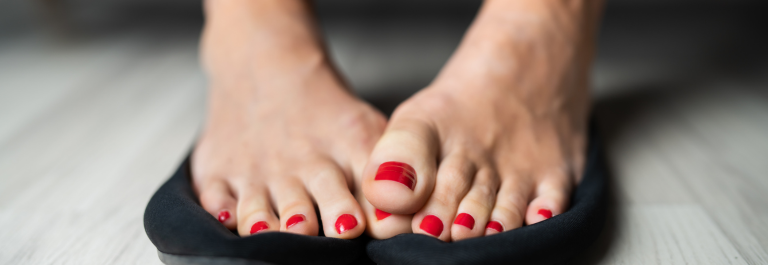Perioral dermatitis (or periorificial dermatitis) is a common skin condition that causes a red rash with small bumps around the mouth, often mistaken for acne or eczema.
Most typically, this rash will impact women between the ages of 18-40. Studies have shown that patients who experience perioral dermatitis during their earlier life stages are more likely to develop rosacea in adulthood, another common skin issue that causes inflamed skin across the cheeks and nose.
Facial rashes can be stressful, not to mention painful. That's why, throughout this post, we're here to explore everything you need to know about:
-
The leading causes of perioral dermatitis
-
Key perioral dermatitis symptoms to keep an eye out for
-
Treating perioral dermatitis with natural remedies
Keep reading to learn more about whether you could be experiencing perioral dermatitis yourself and, if so, how to treat your rash safely and effectively.
What Causes Perioral Dermatitis?
While there is no exact cause of perioral dermatitis, we know these common triggers may be playing a key factor:
-
Steroid creams
-
Overuse of facial products or sunscreens containing harsh chemicals (such as salicylic acid and benzoyl peroxide)
-
Chemicals within your laundry detergent
-
Nasal sprays
-
Fluoride toothpaste
-
Issues relating to gut health or processed foods
-
Hormonal changes
-
Heightened stress levels
Common Symptoms
Periorificial dermatitis will present differently for each individual. However, there are some common tell-tale signs that you can keep an eye out for:
-
Rash, including inflamed, tiny bumps around the mouth
-
Patches of rough, dry skin on your face that may appear red on lighter skin tones and brown, ashen grey, or purplish on darker skin tones
-
In severe cases, the skin may become scaly, flaky, and swollen as the inflammation spreads, causing itching, redness, stinging, or a burning sensation.
-
While perioral dermatitis originates around the mouth, as the infection spreads, you may notice tiny bumps appearing elsewhere on your body, such as the eyelids, nose, forehead, neck, and even genitals.
It's worth noting that this facial rash is often mistaken for atopic dermatitis and seborrheic dermatitis. However, these skin conditions require different and unique treatment plans.
How Do You Treat Perioral Dermatitis?
Suppose you're experiencing a bout of perioral dermatitis. In that case, there are several different steps you can take today to manage your facial rash proactively and to ease perioral dermatitis symptoms.
Give Your Skin A Break From Steroid Creams
Are you currently on a course of topical steroid creams? If so, we'd recommend you consult your healthcare professional or dermatologist to arrange to take a pause from steroids in the meantime.
Topical steroids are often prescribed as an effective treatment for atopic dermatitis and other forms of eczema. However, these strong chemicals may be making your skin even worse.
Be kind to yourself, however, and avoid going cold turkey with your steroid cream, as this could leave you with a withdrawal reaction.
Ditch The Fluoride Toothpaste
Fluoride can irritate sensitive skin, especially when brushing your teeth twice a day, every day. To help you get a handle on your periorificial dermatitis, make the positive change to fluoride-free toothpaste instead, ideally opting for products that don't foam up when you add water (which cause dry skin!)
Reset Your Gut Health
Take a short pause from processed foods, caffeine, alcohol, and sugar for a few weeks to allow your hormone levels and immune system to reset, and to replenish your gut flora.
Again, be kind to yourself, and always be sure to listen to your intuition when choosing which foods and drinks best nourish your body and your mental health. This will likely look different for every individual, and that's okay.
Reset Your Skincare Routine
Skincare is a beautiful way to relax at the end of a long day, but did you know that all those heavy creams could be causing more skin issues than they're worth?
If you're prone to facial rashes, we recommend switching any complicated skin care products for a gentle cleanser or face wash instead, made from simple, moisturizing ingredients that won't strip your face of its natural oils. For example, the Coconut and Sunflower Oil Soap Bar is made from rich coconut oil, shea butter, and sunflower oil, offering a fatty cleanser and moisturizer that will leave your skin feeling soothed, soft and supple.
If you wear makeup, you should take a short 24-hour break to allow your skin to breathe.
Natural Remedies
When it comes to nourishing your skin, Mother Nature has many treatments up her sleeve:
-
Many people like to use apple cider vinegar to treat perioral dermatitis, thanks to the anti-inflammatory properties of this natural ingredient. Having said this, however, apple cider vinegar may also dry out your skin even further.
-
Similarly, essential oils are also a popular treatment alternative. Add 10-15 drops of tea tree, neem, lavender, or oregano essential oils to a moisturizing almond or coconut oil base and rub into the affected area around your mouth.
-
Aloe vera, shea butter, cocoa butter, and manuka honey are highly moisturizing natural remedies that may help ease perioral dermatitis.
Remember to run a patch test with any natural remedies beforehand though to ensure these ingredients don't trigger an allergic reaction.
Manuka Honey for Perioral Dermatitis
Manuka honey is a particular type of honey solely produced from the manuka bush's nectar - a wild shrub that grows in unique microclimates in New Zealand.
What Are The Skin Care Benefits?
Unlike the regular honey on your breakfast table, manuka honey contains at least 100 more methylglyoxal (MGO) - a reactive compound crucial to manuka's antibacterial and anti-inflammatory properties. Manuka honey is also supercharged with Vitamin C, which is known to help boost collagen production and skin cell regeneration processes.
When treating skin conditions, we're a massive fan of the Nourish + Hydrate Manuka Balm - an oil-based balm with a touch of water added to create a uniquely soft, buttery texture that your skin will adore. This honey-kissed, sensitive skin moisturizer contains 16+ New Zealand Active Manuka honeys with 1000x more methylglyoxal than regular honey. Manuka oil is also more potent than tea tree oil when battling bacterial infection and fungus, helping to give you clear skin.
Apply this balm directly to your perioral dermatitis, tiny bumps, or rosacea to soothe your skin, or mix with warm water to create a creamy face wash.
When Is It Time To Speak To A Medical Professional?
If your perioral dermatitis won't clear up on its own, we urge you to contact a medical professional to seek expert advice and guidance. In severe cases, periorificial dermatitis may be treated with oral antibiotics to get your skin started on its healing journey.
Before introducing any natural flare-up treatments, we recommend consulting your doctor, especially if you're already taking other topical antibiotics or over-the-counter medications for your skin.
Soothe Your Perioral Dermatitis Today
Follow these tips to help you identify your perioral dermatitis symptoms today and take proactive steps in your lifestyle to prevent and treat this common facial rash.










